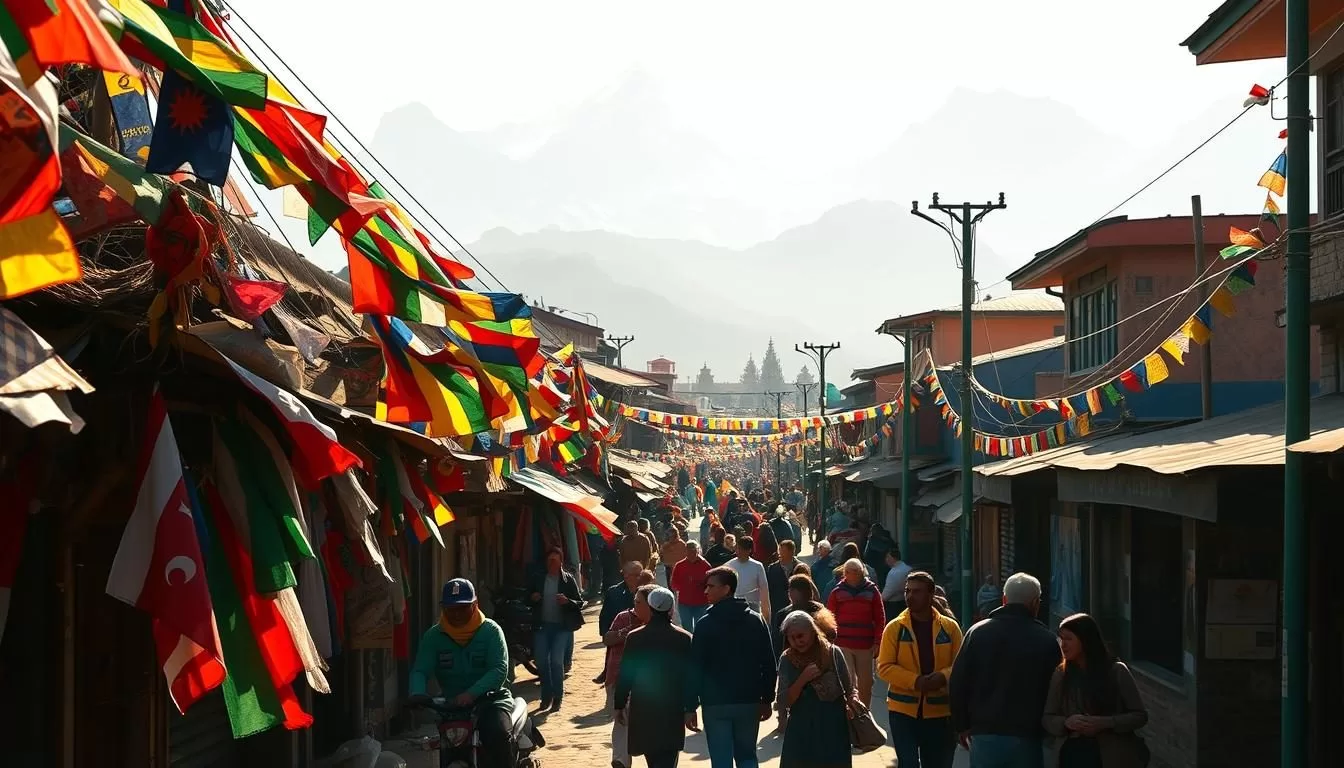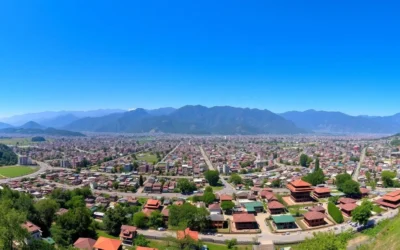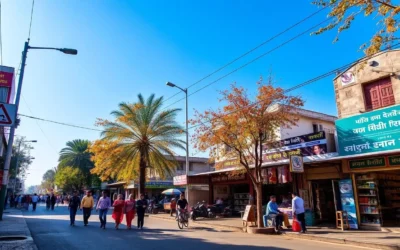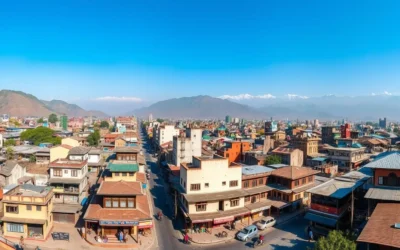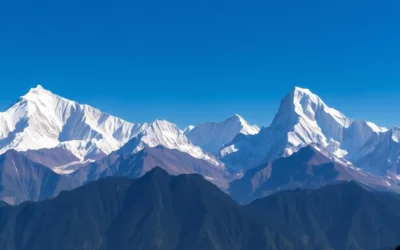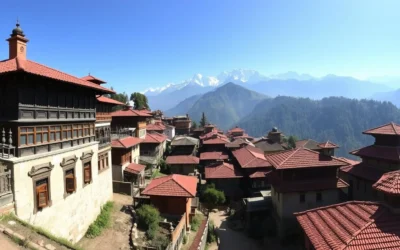✓ Accommodations✓ Flights✓ Rental Cars✓ Tours & Activities
This region is a vibrant tapestry of cultures, with its language playing a central role in shaping its identity. Home to 124 recognized mother tongues, it reflects a deep-rooted diversity that defines its people. The primary language serves as a unifying force, spoken by nearly half the population as their mother tongue and by even more as a second language.
Each language in this region carries a unique cultural legacy, from the Indo-European family, which dominates, to the Sino-Tibetan and Austro-Asiatic families. These tongues are more than just a means of communication—they are a cornerstone of identity and heritage.
As you explore this linguistic landscape, you’ll discover how policies and practices shape everyday interactions. This introduction sets the stage for a deeper dive into the fascinating world of language in this nation.
The Rich History of Nepal’s Languages
The linguistic heritage of this region is deeply rooted in its ancient past, shaped by centuries of cultural exchange and historical events. Early inscriptions, such as those from Dullu, provide a glimpse into the evolution of its language groups.
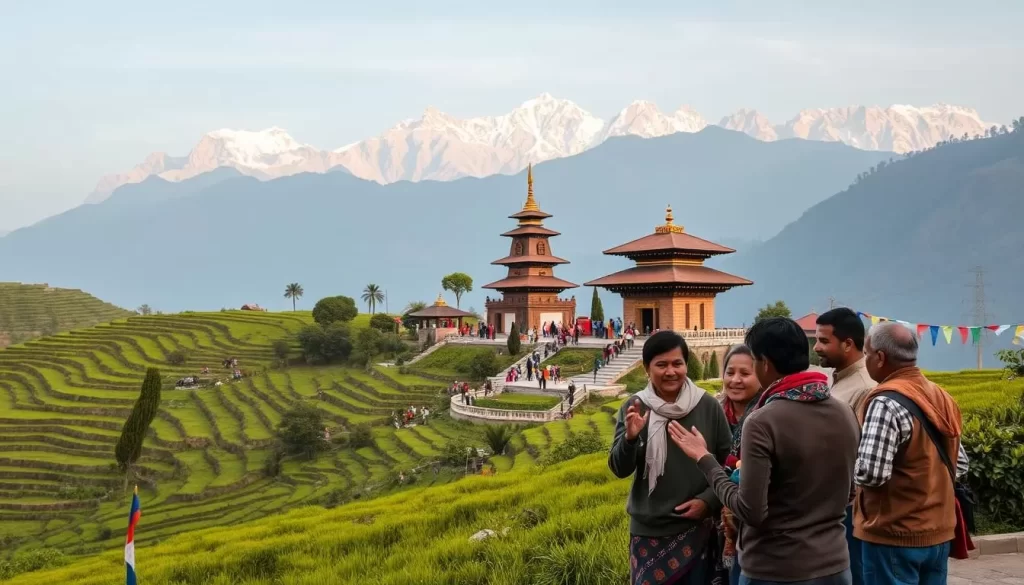
During the medieval period, the Khasa Kingdom played a pivotal role in shaping the Indo-Aryan language roots. This era saw the emergence of Nepal Bhasa, which became a cornerstone of cultural identity.
The Gorkha Kingdom, established in the mid-18th century, further elevated the Nepali language as a unifying force. King Prithvi Narayan Shah’s efforts to promote it as the official language laid the foundation for its modern prominence.
Historical Milestones and Evolution
From the early inscriptions to the literary contributions of the medieval period, the language has evolved significantly. Works like “Amarushataka” and “Muktaka Kavya” highlight its rich literary tradition.
The migration of Indo-Aryan people around 1500 BCE introduced new linguistic elements. These influences blended with local dialects, creating a diverse language family.
Influence of Ancient Kingdoms
Ancient kingdoms like Gorkha and Khasa were instrumental in shaping the language landscape. Their policies and cultural practices fostered the growth of Nepal Bhasa and other dialects.
The Gurkhas, known for their service in the British Indian Army, also played a role in spreading the Nepali language internationally. This global presence continues to influence its development today.
| Historical Period | Key Developments |
|---|---|
| 1500 BCE | Migration of Indo-Aryan people |
| 12th-14th Century | Emergence of Nepal Bhasa |
| Mid-18th Century | Gorkha Kingdom promotes Nepali as official language |
Nepal: Official and widely spoken languages in Modern Context
Modern frameworks define how language is used in official and regional settings. The constitution ensures linguistic diversity while promoting a unified national identity.
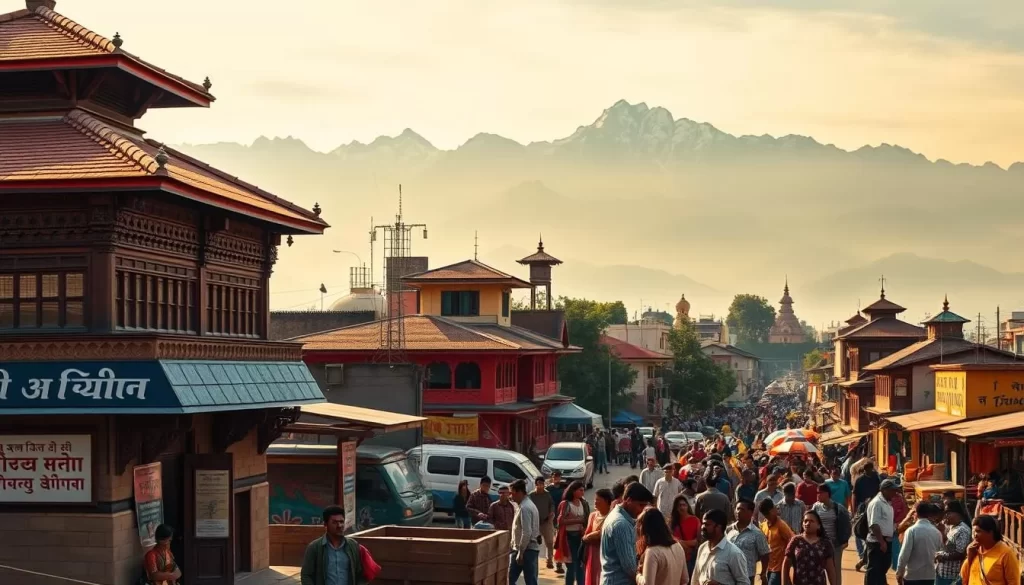
Articles 6 and 7 of the constitution grant each province the right to choose its official language. This policy reinforces Nepali as the national language while recognizing regional tongues.
Federal Language Policy and Constitutional Provisions
The federal government emphasizes Nepali as the primary language for administration and education. However, provinces can adopt additional languages based on their population needs.
This dual approach ensures that while the country remains unified, regional identities are preserved. The status of each language is carefully considered in policy-making.
Provincial Language Rights and Recommendations
Provinces have the autonomy to implement language policies that reflect their cultural heritage. The Language Commission provides recommendations to support this process.
For example, Maithili and Bhojpuri are widely used in certain regions, reflecting their status as vital parts of local identity. This balance between national and regional languages fosters inclusivity.
These modern practices contrast with historical traditions, showcasing the nation’s evolving approach to linguistic governance. By valuing diversity, the country strengthens its cultural fabric.
Language Families and Their Cultural Impact
Understanding the cultural impact of language families reveals a rich heritage. This region’s linguistic diversity is shaped by two major groups: Indo-European and Sino-Tibetan. These families have deeply influenced the cultural fabric of the area.
Indo-European and Sino-Tibetan Contributions
The Indo-Aryan language group, part of the Indo-European family, dominates with 82.1% of speakers. It has played a significant role in shaping the region’s identity. The Sino-Tibetan family, on the other hand, includes languages like Tamang and Newar, which are vital to local traditions.
These families have enriched the region’s cultural landscape. For example, the Nepal Bhasa community has preserved its unique heritage through its language and traditions.
Diverse Indigenous and Minority Groups
Indigenous and minority groups add to the linguistic richness. Languages like Tharu and Maithili reflect the region’s ethnic diversity. These groups play a crucial role in maintaining their language families and cultural practices.
Ethnicity and regional ties are key to preserving these languages. The region’s policies support this diversity, ensuring that minority voices are heard.
Current Demographics and Census Insights
Census data offers a detailed snapshot of the linguistic diversity across the region. The 2011 and 2021 reports highlight significant changes in the population and the spread of language groups. These insights are crucial for understanding the evolving cultural landscape.
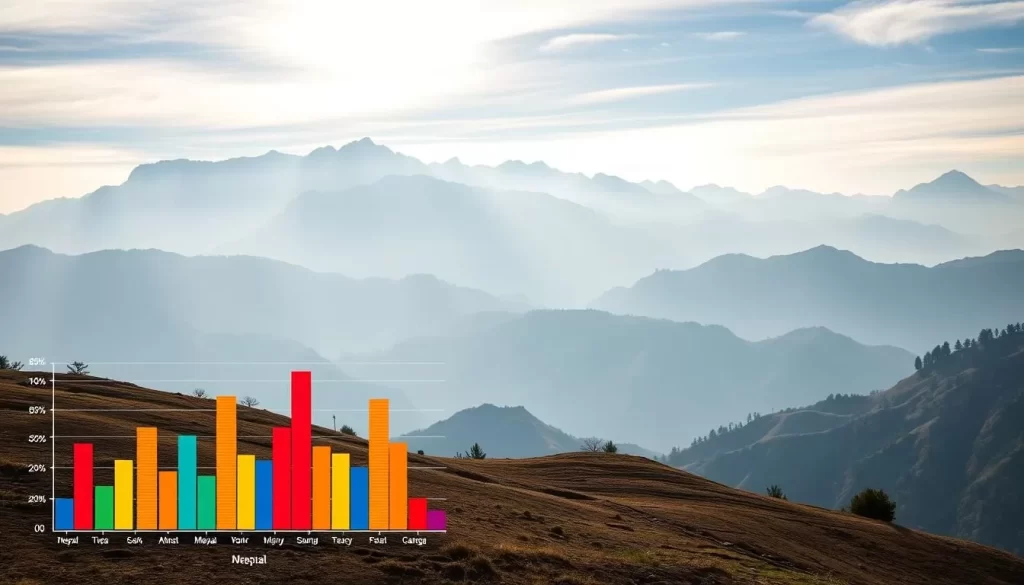
Key Findings from 2011 and 2021 Census Data
According to the 2011 census, 44.86% of the population identified Nepali as their mother tongue. This number reflects its role as a unifying language across diverse communities. The 2021 census further revealed that 123 languages are actively spoken, showcasing the region’s rich linguistic heritage.
Other widely spoken languages include Maithili, Bhojpuri, and Tharu. Each has a significant speaker base, contributing to the region’s cultural mosaic. These findings underscore the importance of preserving minority languages while promoting national unity.
Regional Speaker Distribution and Trends
The distribution of speakers varies significantly across provinces. For example, Maithili is dominant in the eastern region, while Tharu is prevalent in the Terai plains. These regional trends highlight the connection between language and cultural identity.
Over the past decade, urban areas have seen a rise in bilingualism. Many people now use Nepali as a second language, alongside their mother tongue. This shift reflects the influence of education and migration patterns.
For more insights into the 2021 census, you can explore the detailed findings here.
Scripts, Dialects, and Regional Variations
The diversity of scripts and dialects in this area reflects a deep cultural heritage. From ancient writing systems to modern adaptations, each language carries a unique identity. This section explores the rich tapestry of scripts and the dialect variations that define local communities.
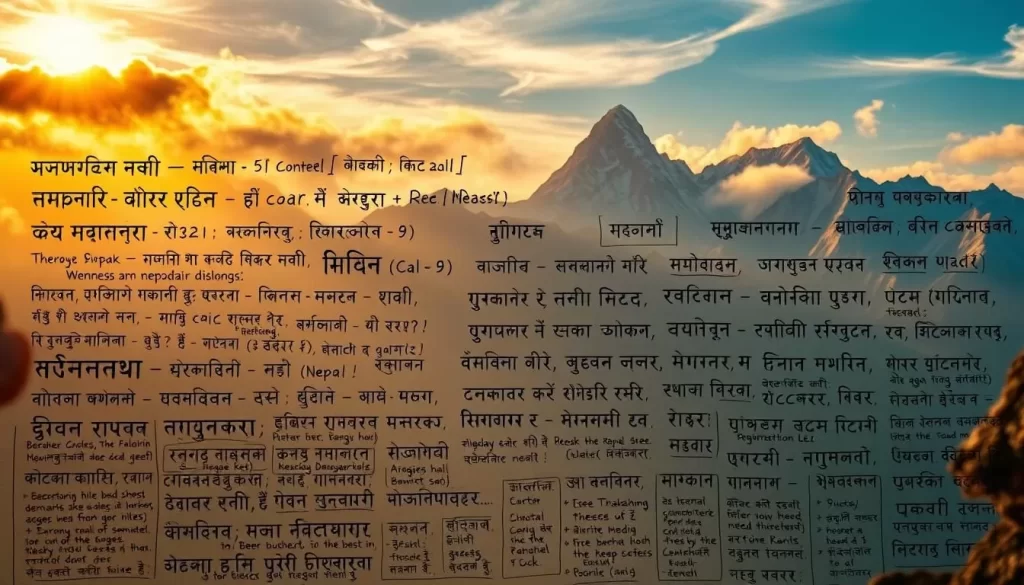
Diverse Writing Systems and Scripts
This region is home to 15 distinct scripts, each with its own historical and cultural significance. The Devanagari script, used for Nepali, is the most widely recognized. It consists of 12 vowels and 36 consonants, forming the foundation of the language.
Other scripts like Limbu and Ol Chiki are vital to indigenous communities. These writing systems are not just tools for communication but also symbols of cultural pride. For example, the Limbu script is used in religious texts and traditional ceremonies.
Dialect Variations and Regional Identity
Dialects vary significantly across different regions, reflecting local identities. Eastern and western dialects of Nepali, for instance, have distinct phonetic and lexical differences. These variations highlight the level of linguistic diversity within the language.
Indigenous dialects like Tharu and Maithili also play a crucial role in preserving cultural heritage. They are an integral part of the region’s linguistic landscape, ensuring that minority voices are heard.
| Script | Usage |
|---|---|
| Devanagari | Primary script for Nepali |
| Limbu | Used in religious and cultural texts |
| Ol Chiki | Indigenous script of the Santali community |
To learn more about the evolution of these scripts, visit this resource. For insights into the linguistic diversity of the region, check out this link.
Conclusion
Exploring the linguistic tapestry of this nation reveals a story of unity in diversity. The language landscape is shaped by historical roots, cultural contributions, and modern policies. Census data highlights that 123 distinct tongues are actively used, with Nepali serving as a unifying force for 44.6% of the population.
Modern frameworks ensure the status of each language is respected, balancing national unity with regional identity. The Indo-Aryan and Sino-Tibetan families have deeply influenced the cultural fabric, reflecting the nation’s rich heritage.
This dynamic interplay of language and culture invites further exploration. Dive deeper into the fascinating world of linguistic diversity by visiting this resource or learn more about the Nepali language here.
The above is subject to change.
Check back often to TRAVEL.COM for the latest travel tips and deals.
